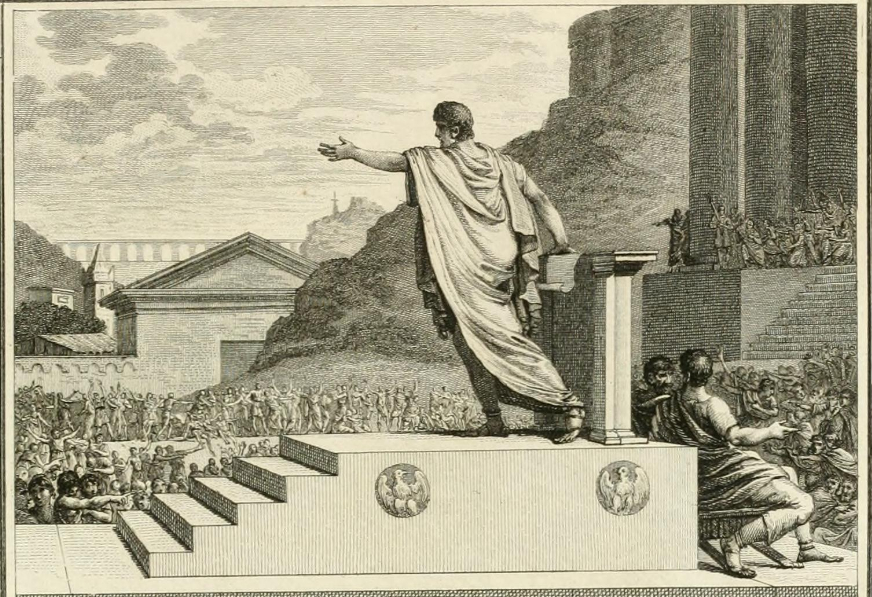Magistrates, Roman
Enlarge text Shrink textThe Roman magistrates (Latin: magistratus) were elected officials in ancient Rome. During the period of the Roman Kingdom, the King of Rome was the principal executive magistrate. His power, in practice, was absolute. He was the chief priest, lawgiver, judge, and the sole commander of the army. When the king died, his power reverted to the Roman Senate, which then chose an Interrex to facilitate the election of a new king. During the transition from the Roman Kingdom to Roman Republic, the constitutional balance of power shifted from the executive (the Roman king) to the Roman Senate. When the Roman Republic was founded in 509 BC, the powers that had been held by the king were transferred to the Roman consuls, of which two were to be elected each year. Magistrates of the republic were elected by the people of Rome, and were each vested with a degree of power called "major powers" (maior potestas). Dictators had more "major powers" than any other magistrate, and after the dictator was the censor, and then the consul, and then the praetor, and then the curule aedile, and then the quaestor. Any magistrate could obstruct ("veto") an action that was being taken by a magistrate with an equal or lower degree of magisterial powers. By definition, plebeian tribunes and plebeian aediles were technically not magistrates since they were elected only by the plebeians, and plebeian tribunes could veto the actions of any ordinary magistrate. During the transition from republic to the Roman empire, the constitutional balance of power shifted from the Roman Senate back to the executive (the Roman Emperor). Theoretically, the senate elected each new emperor; in practice each emperor chose his own successor, though the choice was often overruled by the army or civil war. The powers of an emperor (his imperium) existed, in theory at least, by virtue of his legal standing. The two most significant components to an emperor's imperium were the "tribunician powers" and the "proconsular powers". In theory at least, the tribunician powers (which were similar to those of the plebeian tribunes under the old republic) gave the emperor authority over Rome's civil government, while the proconsular powers (similar to those of military governors, or proconsuls, under the old republic) gave him authority over the Roman army. While these distinctions were clearly defined during the early empire, eventually they were lost, and the emperor's powers became less constitutional and more monarchical. The traditional magistracies that survived the fall of the republic were the consulship, praetorship, plebeian tribunate, aedileship, quaestorship, and military tribunate. Mark Antony abolished the offices of dictator and Master of the Horse during his consulship in 44 BC, while the offices of Interrex and Roman censor were abolished shortly thereafter.
Read more on Wikipedia >
 Topic
Topic



